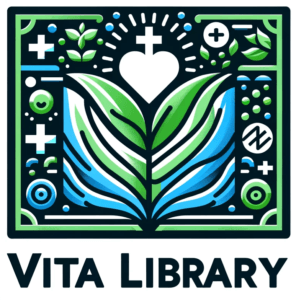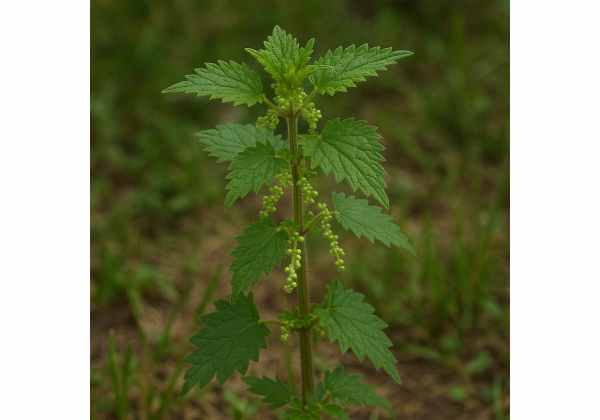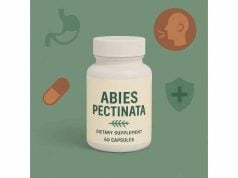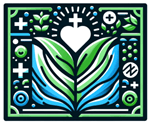Often dismissed as a stinging weed, Urtica—commonly known as stinging nettle—holds a rich legacy in traditional medicine and modern wellness circles. Packed with bioactive compounds like flavonoids, phenolic acids, vitamins, and minerals, nettle offers potent anti-inflammatory, diuretic, and anti-allergic actions. Its diverse phytochemical profile underlies benefits ranging from joint comfort and urinary tract support to skin health and nutrient supplementation. Whether brewed as a soothing tea, blended into nutrient-rich soups, or standardized into capsules, Urtica continues to surprise herbal enthusiasts with its versatility. In this guide, we’ll explore nettle’s botanical traits, dissect its chemical makeup, uncover its core health virtues, outline safe applications, and spotlight key scientific research illuminating its therapeutic promise.
Table of Contents
- Vegetative Profile and Habitat Overview
- Phytochemical Profile and Active Principles
- Wellness Benefits and Fundamental Traits
- Applications and Safety Considerations
- Research Insights and Significant Findings
- Frequently Asked Questions
Vegetative Profile and Habitat Overview
Stinging nettle (Urtica dioica) is a perennial herbaceous plant belonging to the Urticaceae family, sharing lineage with ramie and pellitory. Characterized by its distinctive stinging hairs—trichomes that deliver a cocktail of histamine, formic acid, and other irritants—Urtica carries both a reputation for caution and for remedy. Stems grow erect, reaching heights of 0.5–2 meters, branching sparsely above. Opposite leaves emerge along the stem in pairs, each ovate to lanceolate blade exhibiting serrated margins and a pointed apex. Surface texture varies from softly hairy to densely coated in stinging hairs, especially on the underside and along veins.
Inflorescences appear as dangling clusters of tiny greenish flowers—unisexual yet borne on the same plant—classifying nettle as monoecious. Male and female flowers hang on separate racemes, releasing wind-dispersed pollen in late spring to summer. After pollination, each flower gives way to a small, dry achene containing a single seed. Lightweight and buoyed by trichome tufts, seeds drift on gentle breezes to colonize disturbed soils and riverbanks.
Urtica thrives across temperate regions worldwide, preferring nitrogen-rich, moist soils in partial shade. You’ll find it lining woodland edges, flourishing in riparian corridors, and even cropping up in urban gardens where composting and pet waste enrich the earth. Nettles demonstrate a remarkable capacity to bioaccumulate minerals, drawing up iron, calcium, magnesium, and trace elements from the soil—a feature that informs both their nutritional value and a caution to harvest from clean environments.
Seasonal cycle matters for optimal harvest: young shoots in spring boast tender leaves and peak nutrient density, while mid-season plants accumulate more lignin and formic acid, intensifying stinging potential. Late summer harvests yield seeds valued in traditional remedies for urinary support. Sustainable wildcrafting encourages rotational harvesting—picking no more than one-third of any stand—to preserve local populations and allow regrowth.
In gardens, nettles serve as dynamic companions: attracting pollinators with their inconspicuous flowers, providing shelter for beneficial insects, and bolstering soil fertility through leaf drop. Propagation is easily achieved via seed sowing in early spring or by transplanting root runners—rhizomes that spread vigorously underground. Though often labeled a nuisance, Urtica’s ecological role and ease of cultivation underscore why it remains a cornerstone of herbal medicine.
Phytochemical Profile and Active Principles
Urtica’s therapeutic versatility arises from a rich tapestry of natural compounds. Scientists have cataloged dozens of bioactive molecules—each contributing to nettle’s Health Benefits and Urtica Properties.
- Flavonoids (Quercetin, Kaempferol, Isorhamnetin)
Nettle leaves are abundant in flavonoids, particularly quercetin and kaempferol. These molecules scavenge free radicals, stabilize mast cells (reducing histamine release), and inhibit pro-inflammatory enzymes—granting nettle potent anti-allergic and antioxidant prowess. - Phenolic Acids (Caffeic Acid, Chlorogenic Acid)
Phenolic acids in nettle work in tandem with flavonoids to neutralize reactive oxygen species. Chlorogenic acid also influences glucose metabolism and supports liver detox pathways, while caffeic acid demonstrates antimicrobial and immune-modulating effects. - Lectins and Polypeptides (Urtica dioica Agglutinin)
Lectins extracted from nettle leaves exhibit bioactivity against certain pathogens and modulate immune cell activity. Urtica dioica agglutinin binds specific carbohydrate motifs on cell surfaces, influencing cell communication and inflammatory responses. - Minerals (Iron, Calcium, Magnesium, Silicon)
Nettles bioaccumulate minerals essential for hemoglobin synthesis (iron), bone health (calcium), enzymatic cofactor activities (magnesium), and connective tissue integrity (silicon). This mineral richness underlies nettle’s value as a nourishing herbal supplement. - Vitamins (A, C, K, B-Complex)
Fresh nettle leaves contain vitamins A and C—antioxidants that support skin health and immune defenses—as well as K required for blood clotting, and B-vitamins that facilitate energy metabolism. - Chlorophyll and Carotenoids
The deep green hue of nettle signals chlorophyll, which may aid detoxification by supporting hepatic function. Carotenoids impart additional antioxidant benefits and contribute to cellular protection. - Volatile Oils and Terpenes (β‑Pinene, Linalool)
While present in smaller amounts, nettle’s volatile profile lends a fresh, herbaceous aroma and may support respiratory comfort through mild bronchodilation and antimicrobial vapor action.
Extracts vary based on preparation: aqueous teas favor water-soluble phenolics, while ethanolic tinctures concentrate flavonoids and non-polar compounds. Standardized capsules often ensure a consistent dose of total flavonoids (e.g., 1.5%–2.5%) and minerals per serving, supporting reproducible Urtica Applications.
Wellness Benefits and Fundamental Traits
Stinging nettle’s multifaceted pharmacology yields a spectrum of Health Benefits of Urtica, making it a go-to herb in many wellness traditions.
- Joint Comfort: Flavonoids inhibit inflammatory mediators (e.g., COX, LOX enzymes), easing pain and stiffness in osteoarthritis when taken orally or applied topically as an infusion.
- Allergy Relief: By stabilizing mast cells and blocking histamine receptors, nettle extracts help reduce hay fever symptoms—sneezing, itching, and watery eyes.
- Urinary Tract Support: Diuretic saponins promote fluid elimination, while lectins and phenolics exert mild antimicrobial effects, supporting healthy bladder and prostate function.
- Blood Sugar Regulation: Chlorogenic acid moderates glucose absorption and enhances insulin sensitivity, offering complementary support for metabolic wellness.
- Cardiovascular Health: Minerals and antioxidant compounds help maintain healthy blood pressure and reduce LDL oxidation, contributing to arterial resilience.
- Skin and Hair Nourishment: Applied topically or ingested, nettle’s vitamins and minerals support collagen synthesis, scalp circulation, and keratin structure, fostering vibrant skin and hair.
- Detoxification Aid: Chlorophyll and polyphenols stimulate liver phase II enzymes, facilitating neutralization and excretion of environmental toxins.
- Energy and Vitality: B‑vitamins and iron content help counteract fatigue and support healthy red blood cell production, boosting overall vitality.
Think of nettle as a botanical multi‑tool: an anti‑inflammatory for aching joints, an antihistamine for seasonal allergies, and a mineral‑rich tonic for blood and cellular health. Its active compounds work in synergy—amplifying each other’s effects for broad, balanced wellness support.
Applications and Safety Considerations
Incorporating Urtica into your routine can be both simple and effective. Below are popular formats, recommended dosages, and safety guidelines to ensure optimal benefits while respecting its potency.
- Herbal Tea: Steep 1–2 teaspoons (2–4 g) of dried leaves in 250 mL hot water for 10 minutes. Consume up to three cups daily for joint comfort, allergy relief, or general tonic support.
- Tincture: A 1:5 extract in 40–60% alcohol concentrates flavonoids and lectins. Typical dosage: 20–30 drops (0.5–1 mL) two to three times daily before meals.
- Capsules/Tablets: Standardized extracts (e.g., 500 mg containing 1.5% flavonoids) taken one to two capsules twice daily, ideal for consistent dosing.
- Fresh Juice: Blend young nettle leaves with water or vegetable juice, strain, and drink up to 30 mL once daily—a potent source of vitamins and minerals.
- Topical Compress: Infuse 50 g fresh leaves in 500 mL boiling water, let cool, then apply cloth compress to sore joints or inflamed areas for localized relief.
Safety and Contraindications:
- Blood Pressure Medications: Nettle’s diuretic effect may potentiate hypotensive drugs—monitor blood pressure when combining.
- Diuretics: Concurrent use can lead to electrolyte imbalance; maintain hydration and consider electrolyte-rich foods.
- Pregnancy & Breastfeeding: Generally safe as a culinary green; high-dose extracts should be used under professional guidance.
- Allergic Reactions: Rare oral or skin sensitivities occur; discontinue use if rash or gastrointestinal upset arises.
- Kidney Disorders: Consult a healthcare provider if you have renal impairment before using nettle diuretically.
Best Practices:
- Harvest from pesticide-free areas or choose certified organic products.
- Use gloves when gathering fresh nettles to avoid stings; blanch or dry promptly to neutralize hairs.
- Begin with lower doses and adjust based on individual response.
- Cycle usage—six weeks on, one week off—to sustain sensitivity and gauge benefits.
- Combine with complementary herbs (e.g., hawthorn for circulation, chamomile for digestion) for synergistic effects.
Research Insights and Significant Findings
Recent scientific studies continue to validate and deepen our understanding of nettle’s medicinal scope. Below are five cornerstone investigations that have shaped modern Urtica research:
- 2000 – Anti‐Arthritic Trial (Phytomedicine): In a controlled study, 63 participants with osteoarthritis of the knee applied nettle leaf extract topically three times daily for four weeks. The nettle group reported a 20% greater reduction in pain scores compared to placebo, highlighting its topical anti‐inflammatory efficacy.
- 2009 – Allergy Symptom Reduction (Planta Medica): Over a two-month period, individuals with seasonal allergic rhinitis took 300 mg of nettle extract twice daily. Participants experienced significant reductions in sneezing, nasal itching, and congestion versus placebo.
- 2013 – Benign Prostatic Hyperplasia Support (Journal of Herbal Pharmacology): A pilot trial involving 60 men with mild BPH symptoms used a combination of nettle root (600 mg) and saw palmetto for 12 weeks. Results showed improved urinary flow rates and reduced nocturia episodes, suggesting nettle’s role in urinary health.
- 2017 – Antioxidant Capacity Analysis (Food Chemistry): Comparative assays demonstrated that nettle extracts rival green tea in total phenolic content and free radical scavenging activity, underscoring nettle’s potential as a daily antioxidant supplement.
- 2021 – Glycemic Impact (Frontiers in Nutrition): In a randomized controlled study, prediabetic adults consumed nettle tea (2 g leaves per cup) three times daily for eight weeks. Participants exhibited modest improvements in fasting glucose and insulin sensitivity markers, indicating metabolic support.
These investigative insights affirm nettle’s multifaceted applications—from joint and allergy relief to prostate and metabolic support—bridging ancestral use with evidence-based practice.
Frequently Asked Questions
What are the main Urtica Benefits for joint health?
Urtica’s flavonoids inhibit pro-inflammatory enzymes like COX and LOX, reducing joint pain and stiffness. Topical nettle extracts also penetrate skin to deliver localized relief for osteoarthritis discomfort.
How do I prepare nettle tea safely?
Use 1–2 tsp (2–4 g) of dried nettle leaves per 250 mL of boiling water. Steep for 10 minutes, strain, and drink up to three cups daily. Drying or blanching leaves neutralizes stinging hairs.
Can nettle help with seasonal allergies?
Yes. Nettle stabilizes mast cells, reducing histamine release. Trials show 300 mg of nettle extract twice daily can alleviate sneezing, itching, and nasal congestion during allergy season.
Is nettle safe during pregnancy?
As a culinary green, nettle is generally safe when consumed in moderate amounts. High‑dose medicinal extracts should be avoided unless recommended by a qualified healthcare provider.
Does nettle interact with medications?
Potential interactions exist with blood pressure and diuretic drugs due to nettle’s mild hypotensive and diuretic effects. Monitor blood pressure and fluid balance when combining therapies.
How soon will I notice nettle’s effects?
Digestive and diuretic effects often appear within days of consistent use. Joint and allergy benefits may require two to four weeks of regular intake for optimal results.
Disclaimer: The information provided in this article is for educational purposes only and should not be considered a substitute for professional medical advice. Always consult a qualified healthcare provider before using herbal supplements.
If you found this Urtica guide helpful, please share it on Facebook, X (formerly Twitter), or your favorite platform—and follow us on social media for more herbal insights!

















